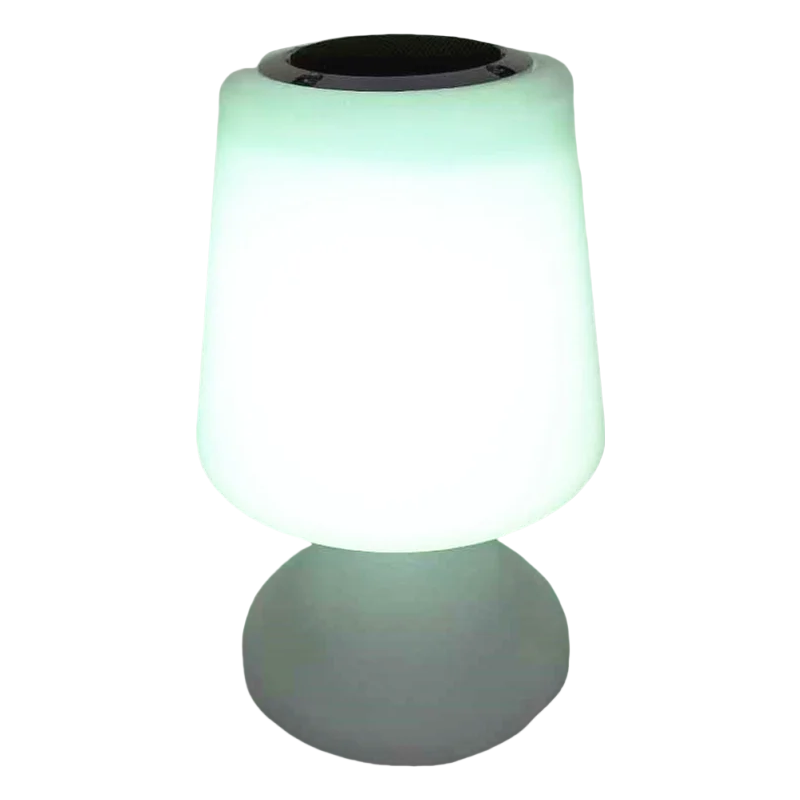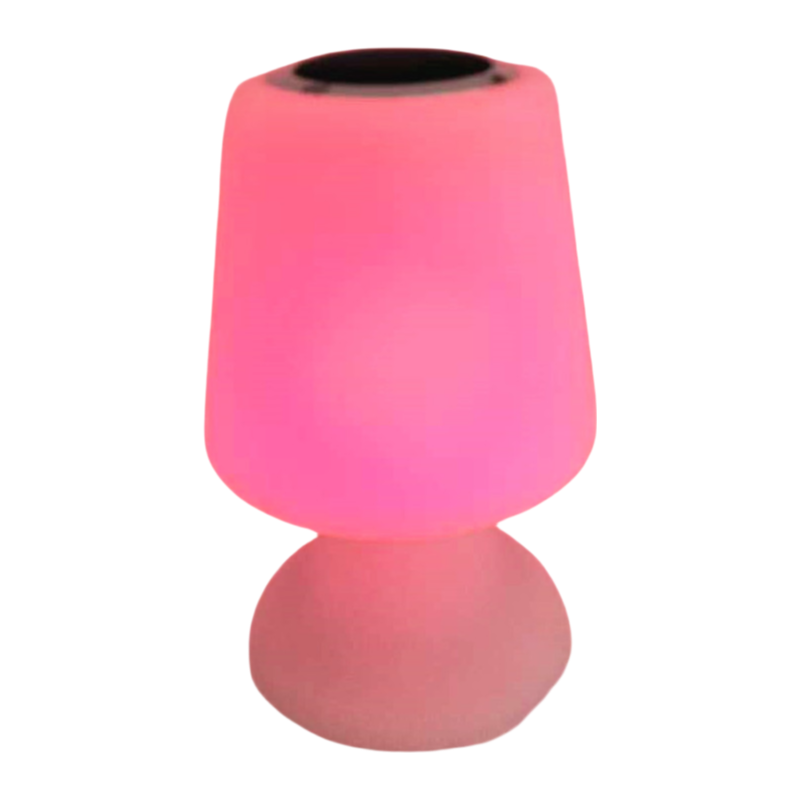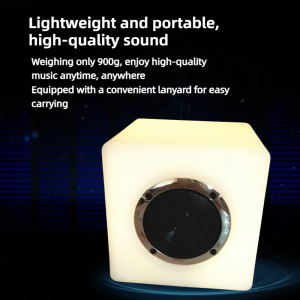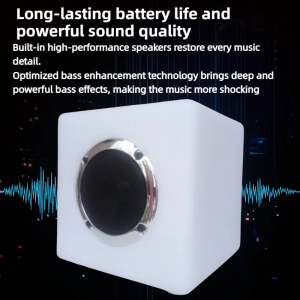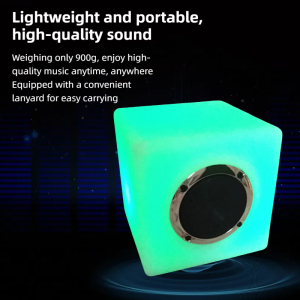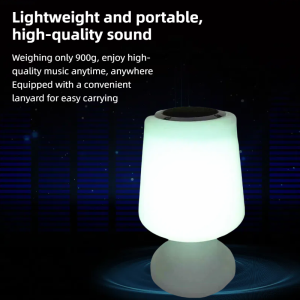Description
bluetooth speaker radio alarm
bluetooth speaker radio subwoofer
bluetooth speaker radio tv
Products Description
Mood Light Bluetooth Speakers for Home
The Bluetooth speaker comes with 64 million colors of lights, which will change and flicker with the speed of the music. When the volume of the Bluetooth device is at 80-90% of the total volume, the light will flicker at a high frequency with the speed of the music. When the volume of the Bluetooth device is at 70-80% of the total volume, the light will flicker at a low frequency with the speed of the music. When the volume of the Bluetooth device is below 70% of the total volume, all 64 million colors of lights will be automatically turned off, and the Bluetooth speaker system will automatically enter the hypnosis mode. At this time, the sound it plays is like a lullaby, giving people a comfortable rest environment. In addition, press and hold the power button for 3 seconds, and the Bluetooth speaker will enter the night light mode (i.e. warm white light lighting mode).
| Parameter | |
| Description | Music control lights; Long-life RGB Colorful LED Light;Waterproof and Sunproof;Switch and smart phone control;Rechargeable Lithium Battery |
| Size | 15*15*15,20*20*20,35*35*35cm |
| Material | Import PE |
| Led quantity | 6RGB+6W SMD |
| Channels | mono or stereo |
| Bluetooth work distance | 20M |
| Input voltage | 100-240V 50/60Hz |
| Adapter voltage | 5VDC, make adater plug for fit for different country |
| Power | 5w-100w |
| Charge time | 3 hours |
| Working time | 8 hours |
| Name | bluetooth speaker music control led flashing cube light |
| Use of venues | hotel,party,club,garden,home |
| Work mode | The lights change with the music |
| Colors | 64million colors |
| Net weight and gross weight | 1-2kg/2-3kg |
| Product size | L* w* h: 15*15*15,20*20*20,35*35*35 (cm) |
| Packaging size | L* w* h: 17*17*17,22*22*22,37*37*37 (cm) |
Details Images
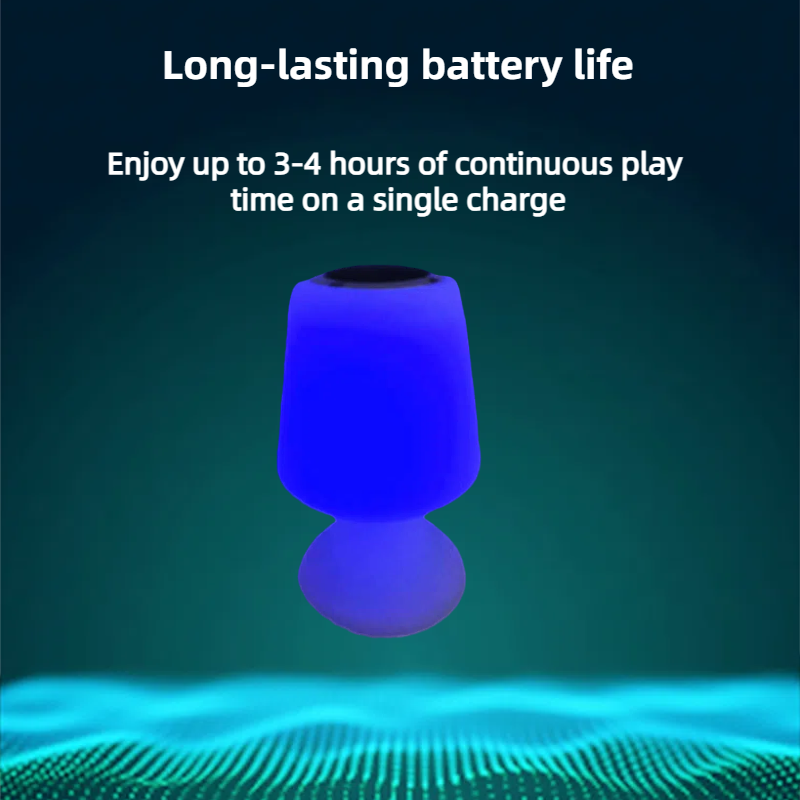
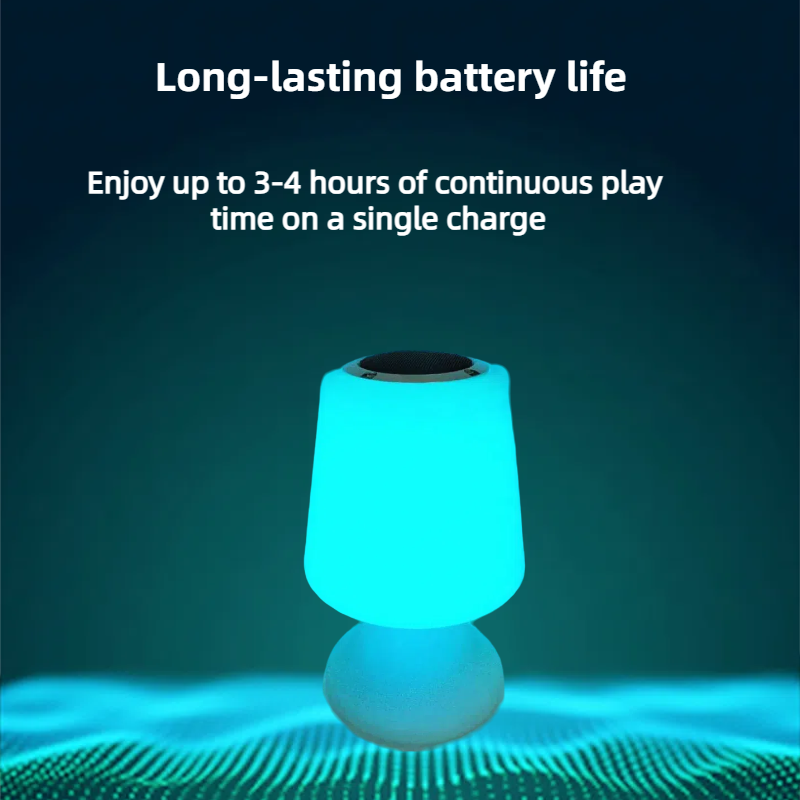
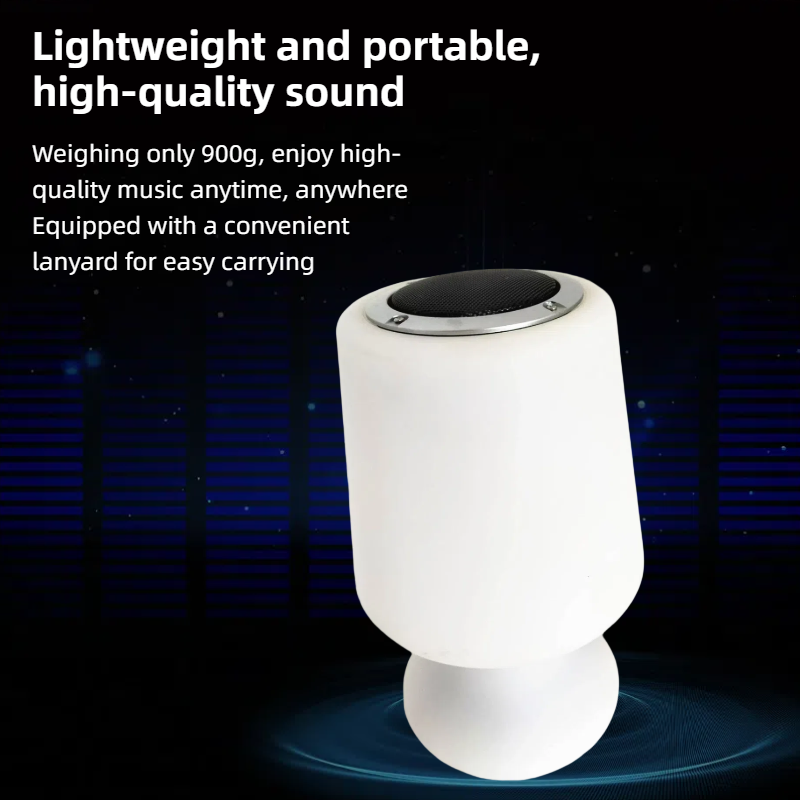
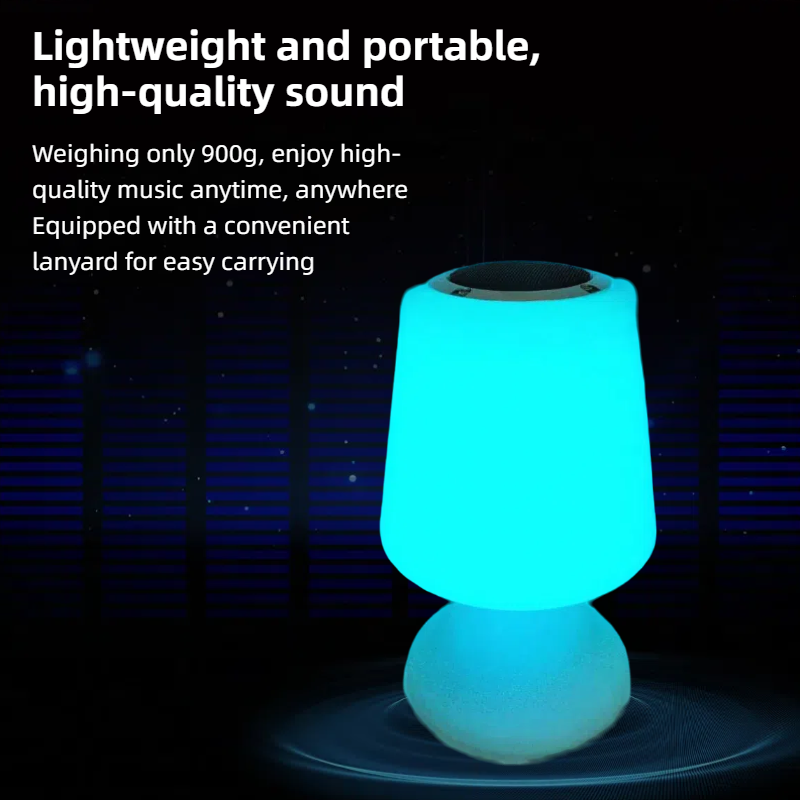
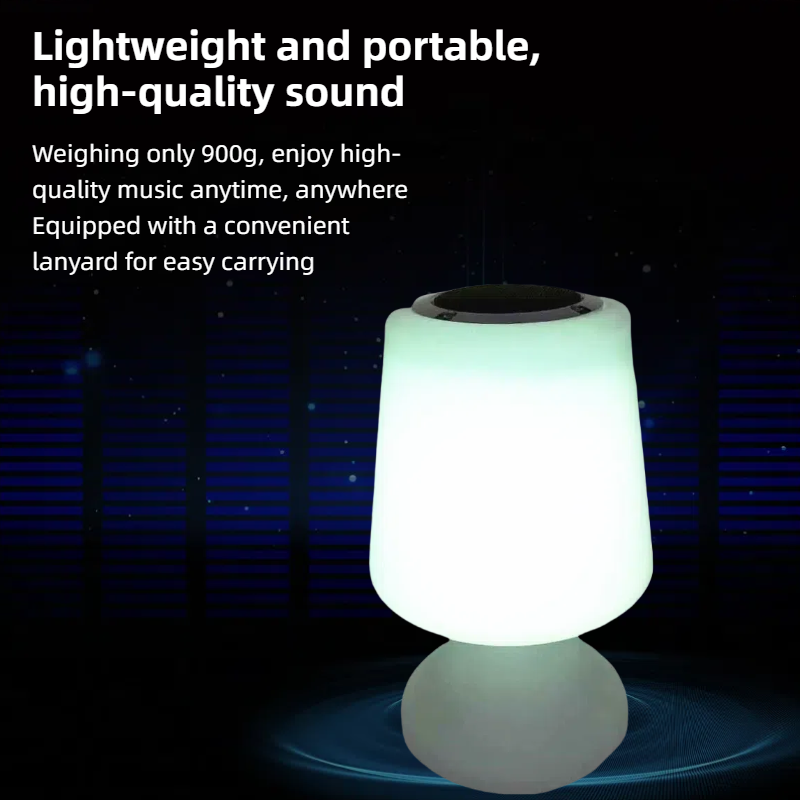
max power ultra 8 bluetooth speaker with microphone
In today’s educational environment, the development of technology has provided teachers with more teaching tools and options. The combination of Bluetooth speakers and USB microphones has become a common way to improve teaching effectiveness. They not only provide high-quality audio input and output, but also enhance teaching interactivity and participation. This chapter will detail how to use Bluetooth speakers with USB microphones, as well as application cases and FAQs in various teaching scenarios.
1. Connection and use of Bluetooth speakers and USB microphones
1.1 Device connection
First, teachers need to ensure that the connection between the Bluetooth speaker and the computer, mobile phone or other device is stable. This usually involves the process of Bluetooth pairing and connection. The specific steps are as follows:
1. Turn on the Bluetooth function on the device.
2. Search for available Bluetooth devices on the device and select the corresponding Bluetooth speaker.
3. Complete the pairing process, usually entering a pairing code.
4. After pairing is successful, the device will display the connection status and you can start using it.
If the device does not have Bluetooth function, you can use a USB cable to connect the speaker to a computer or other device.
1.2 Microphone Usage
USB microphones are often used to capture teachers’ voices and provide clear sound quality. When using a USB microphone, teachers need to pay attention to the following points:
1. Make sure the microphone is properly connected to the computer or other device.
2. Adjust the audio settings on the device and make sure the microphone is selected as the audio input device.
3. When turning on the microphone, pay attention to the volume adjustment to avoid the sound being too loud or too quiet.
4. When using the microphone, try to keep a moderate distance from the mouth to obtain the best recording effect.
1.3 Microphone Usage Tips
To improve the sound quality of the USB microphone, teachers can take the following measures:
1. Before using, make sure the microphone has the correct driver installed.
2. When speaking, try to keep the distance between the microphone and the mouth between 1-2 inches.
3. In a noisy environment, you can use the noise suppression function to reduce background noise.
4. Clean the microphone regularly to maintain the clarity of the sound.
2. Application cases in teaching scenarios
2.1 Language teaching
In language teaching, USB microphones and Bluetooth speakers can provide an excellent audio experience. Teachers can use a USB microphone to make clear speech so that students can hear it clearly, and then use a Bluetooth speaker to play the standard pronunciation for students to imitate.
2.2 Music Teaching
Music teaching can also benefit from the cooperation of USB microphones and Bluetooth speakers. Teachers can use microphones to demonstrate singing or playing musical instruments, and then let students follow. Bluetooth speakers can play various music teaching materials, allowing students to feel the rhythm and rhythm of music.
2.3 Classroom Explanation
In traditional classroom explanations, USB microphones and Bluetooth speakers can help teachers convey information better. The microphone can capture the teacher’s voice, while the Bluetooth speaker can play the audio clearly to ensure that every student can hear it.
2.4 Conference Teaching
For conference teaching or group discussions, USB microphones and Bluetooth speakers provide instant audio feedback. Teachers can ask questions, students can answer directly, and the entire classroom can interact in real time.
2.5 Remote Teaching
In remote teaching or online courses, USB microphones and Bluetooth speakers are the key to maintaining high-quality audio interaction. They can help teachers and students communicate better and increase participation.
3. Answers to Frequently Asked Questions
3.1 What should I do if the Bluetooth speaker connection is unstable?
If the Bluetooth speaker connection is unstable, you can try the following methods:
1. Make sure the Bluetooth function of the device is turned on.
2. Check whether the Bluetooth version of the device supports the Bluetooth speaker.
3. Try to re-pair the Bluetooth speaker.
4. Keep the distance between the device and the Bluetooth speaker moderate.
3.2 What should I do if the sound quality is poor?
If the sound quality is poor, you can try the following methods:
1. Adjust the sound effect mode or high and low bass adjustment of the Bluetooth speaker.
2. Check whether the USB microphone needs to install the driver and make sure that the driver is installed correctly.
3. Try to replace the speaker or microphone that is more suitable for teaching.
3.3 What should I do if the battery life is insufficient?
To extend the battery life, you can try the following methods:
1. Avoid long-term high volume use.
2. Turn off the power of the Bluetooth speaker when it is not needed.
3. Choose a device with longer battery life.
Through the above analysis and learning, teachers can better understand how to make full use of the potential of Bluetooth speakers and USB microphones to improve teaching effectiveness. I hope the content of this chapter can be helpful to teachers’ teaching.
